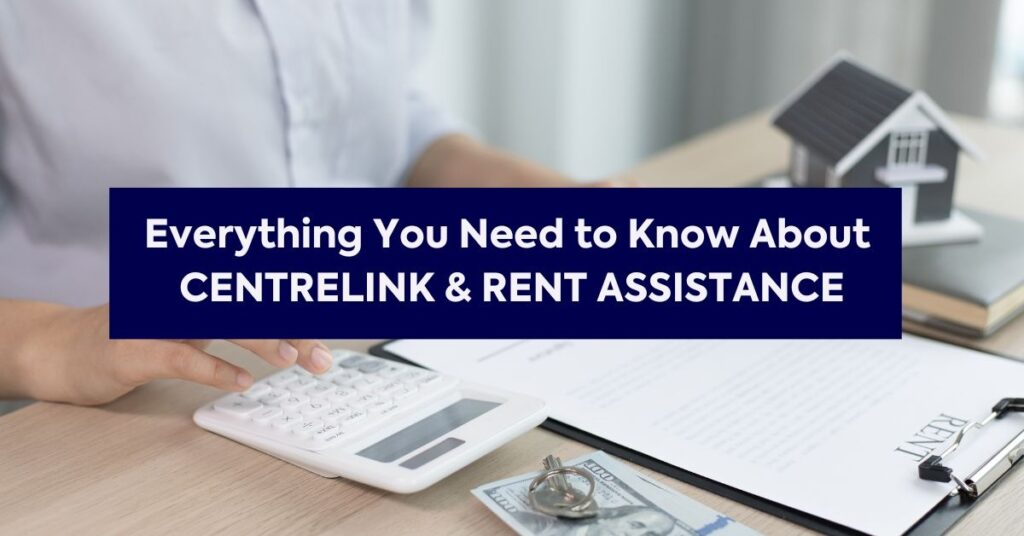You might have heard whispers about ‘Cash Out Day Australia’ lately, and it’s a pretty big deal for a lot of people. Basically, it’s a movement that’s gaining steam, encouraging Aussies to actively use and withdraw physical cash. Think of it as a collective nudge to keep the humble banknote and coin relevant in our increasingly digital world.
What Is Cash Out Day Australia and Why It Matters
Why does this matter, you ask? Well, Australia is heading towards a cashless society at a pretty rapid pace. Banks are closing branches, ATMs are disappearing, and more and more businesses are saying ‘tap and go only’. While digital payments are convenient for many, this shift leaves some people behind. We’re talking about older Australians who might not be comfortable with apps, people in regional areas with spotty internet, or even just folks who like to keep a close eye on their spending by handling actual money.
The core idea is simple: if we don’t use cash, we risk losing it altogether. And that’s a problem because cash offers a level of privacy, accessibility, and financial control that digital transactions just can’t match.
Here’s a snapshot of what’s happening:
- Declining Cash Use: While many Aussies still prefer cash, the overall trend shows a significant drop in its everyday use for transactions.
- Bank Branch Closures: Hundreds of bank branches have shut down across the country, making it harder to access cash and banking services, especially outside major cities.
- Business Cashless Policies: A growing number of businesses, from cafes to major retailers, are moving to card-only payments, sometimes without clear alternatives.
This push towards a fully digital economy isn’t just about convenience; it’s about access and choice. When cash disappears, so does a vital option for many Australians, potentially creating a two-tiered system where some are excluded from basic economic participation.
Cash Out Day Australia is more than just a protest; it’s a reminder that physical currency plays a vital role in our financial ecosystem. It’s about ensuring everyone has a way to pay, regardless of their tech savviness or location.
The Origin and Purpose of the Cash Out Day Australia Movement
The “Cash Out Day Australia” movement didn’t just pop up out of nowhere. It’s really a response to a growing trend we’ve all been seeing – the big push towards a cashless society. You know, fewer ATMs, more businesses saying “tap and go only,” and banks closing branches left, right, and centre. It feels like physical money is slowly being pushed out, and for a lot of people, that’s a real worry.
The main idea behind Cash Out Day is to remind everyone, and especially the powers that be, that cash is still important. It’s about making a statement, a bit of a protest, really, to show that people still want and need the option to use physical currency. It’s not just about nostalgia; it’s about choice and accessibility.
Think about it:
- Financial Inclusion: Not everyone has a bank account or a smartphone. For some, especially older Aussies or those in regional areas, cash is their primary, sometimes only, way to pay for things.
- Privacy and Control: Using cash offers a level of privacy that digital transactions just don’t. It’s a way to keep your spending completely to yourself.
- Resilience: What happens when the internet goes down, or the power grid fails? Cash still works when digital systems don’t.
So, the purpose is pretty straightforward: to highlight the value of cash and to push back against a complete shift to digital payments. It’s a way for everyday Australians to say, “Hey, don’t forget about us and our need for cash.”
The movement is essentially a grassroots effort, driven by concerns that the rapid move to digital payments is leaving some people behind and eroding a fundamental aspect of financial freedom.
How Cash Out Day Australia Aims to Protect Physical Currency
Cash Out Day Australia is all about keeping physical money in our pockets, and it’s not just a symbolic gesture. It’s a practical pushback against a world that seems determined to go completely digital. Think about it – when you can’t use cash, you lose a bit of your freedom, right? This movement wants to make sure that doesn’t happen.
One of the main ways Cash Out Day Australia works is by encouraging people to actually use their cash. It sounds simple, but when everything is tap-and-go, we tend to forget about the notes and coins we have. By making a conscious effort to withdraw and spend cash on this day, people are sending a clear message: we still value it.
Here’s what the movement is trying to achieve:
- Maintaining Choice: It ensures everyone, regardless of their tech-savviness or access to digital tools, can still make purchases.
- Supporting Vulnerable Groups: Elderly Australians, people in rural areas with poor internet, and those on tight budgets often rely on cash. This day helps keep their needs front and centre.
- Promoting Financial Literacy: Using cash can make it easier to track spending. This movement reminds us of that tangible connection to our money.
- Resisting Over-Surveillance: Digital transactions leave a trail. Cash offers a level of privacy that many people feel is important.
The core idea is to demonstrate that there’s still a significant demand for physical currency, which in turn pressures banks and businesses to maintain cash services. It’s a way to show that a fully cashless society isn’t necessarily what everyone wants or needs.
We’re seeing more and more businesses stop taking cash, and ATMs are disappearing. This isn’t just an inconvenience; it’s a fundamental shift that could leave many people behind. Cash Out Day Australia is a response to that trend, a call to action to keep our financial options open.
It’s also about highlighting the practical issues. For instance, ATM fees can add up, and card surcharges can make small purchases more expensive. Cash avoids these extra costs. By actively participating, people are voting with their wallets – or rather, with their cash – to keep this option alive and well for everyone.
Reasons Australians Are Supporting Cash Out Day Australia
It seems like everywhere you look these days, it’s ‘tap and go’. While that’s convenient for some, a lot of Aussies are feeling left behind or just plain uneasy about a world that’s ditching physical money. That’s where Cash Out Day Australia comes in – it’s a bit of a rallying cry for people who still value having cash in their wallets.
One of the biggest worries is about privacy. When you pay with cash, it’s a private transaction. No one’s tracking where you spend your money or what you’re buying. This is a big deal for a lot of people who don’t want their every purchase logged and analysed. The idea of a fully digital economy, where every transaction is recorded, just doesn’t sit right with many.
Then there’s the issue of accessibility. Not everyone has a smartphone or a bank account, or they might have trouble using digital payment systems. Think about older folks, people in regional areas where the internet can be spotty, or even just someone who prefers the simplicity of cash. When businesses stop accepting cash, these people can be excluded. It’s about making sure everyone can still participate in the economy.
Here are some of the main reasons people are getting behind this movement:
- Financial Control: Cash helps people budget better. It’s easier to see how much you’re spending when you’re handing over notes and coins, rather than just tapping a card and hoping for the best.
- Resilience: What happens when the power goes out, the internet is down, or there’s a system glitch? Cash still works. It’s a reliable backup that digital payments just can’t offer.
- Avoiding Fees: Many businesses add surcharges for card payments. Cash avoids these extra costs, which really add up over time.
- Supporting Small Businesses: Some smaller businesses, especially those in more traditional sectors, rely on cash. They worry that going cashless will alienate customers or add complexity they can’t handle.
The push towards a cashless society isn’t just about convenience; it’s about choice. People want the option to use cash, and they’re concerned about losing that freedom. It’s about maintaining a payment method that’s been around for centuries and still serves a real purpose for a significant portion of the population.
It’s also about fairness. Some people feel that banks and big corporations stand to gain the most from a cashless system, while everyday people might end up paying more or losing access. Cash Out Day Australia is a way for ordinary Australians to voice their concerns and say, ‘Hey, we still want cash to be an option.’
Impact of Cashless Payments on Everyday Transactions
The shift towards cashless payments is changing how we do our shopping and pay our bills, and it’s happening pretty fast. For a lot of us, tapping our card or phone feels quicker and easier than digging for change. It’s true, digital transactions can speed things up at the checkout, which is great when you’re in a hurry. Plus, all those digital records make keeping track of spending and doing the books a bit simpler for businesses.
However, this move isn’t without its hitches. Not everyone is comfortable or able to go fully digital. Think about older Aussies, people in regional areas with spotty internet, or those doing it tough financially – they often rely on cash. When businesses stop accepting it, these folks can feel left out or even excluded. It also means that if the power goes out or the internet drops, those card machines stop working, and suddenly, no one can buy anything.
Here’s a look at some of the ways cashless payments are affecting our daily lives:
- Convenience for many: Younger generations, in particular, have embraced digital wallets and contactless payments, finding them super handy.
- Exclusion of some: Vulnerable groups, including the elderly and those with limited access to banking, can be disadvantaged.
- Operational risks: Reliance on technology means transactions can be halted by power outages or network failures.
- Hidden costs: Businesses often face fees for processing card payments, which can sometimes be passed on to customers through surcharges.
The push for cashless transactions, while offering some benefits like speed and simplified record-keeping, also presents significant challenges. It risks alienating a portion of the population and introduces vulnerabilities related to technological dependence. Finding a balance that serves everyone is key.
It’s also worth noting that some businesses are finding that while digital is popular, customers still want the option to use cash. Forcing a cashless approach can sometimes lead to a poor customer experience and might even mean losing sales. The debate around whether businesses should be allowed to refuse cash is ongoing, with some arguing for mandates to ensure cash remains an option for essential goods and services.
Cash Out Day Australia and the Fight Against a Fully Digital Economy
It feels like every other day there’s news about another business going cashless. You pop into a cafe for a coffee, or a shop to grab something quick, and suddenly it’s ‘tap and go’ or nothing. This shift towards a fully digital economy isn’t just a minor inconvenience for some; for many, it feels like a real push to remove physical cash from our lives altogether. That’s where movements like Cash Out Day Australia come in. They’re essentially a stand against this trend, a way for people to show they still value and want to use cash.
Think about it – the idea of a completely cashless society sounds convenient for some, sure. No more fumbling for change, just a quick tap of your card or phone. But what happens to the people who can’t easily access digital payments? Or those who just prefer the privacy and control that cash offers? This is the core of the debate. Cash Out Day Australia is about making sure that option remains available for everyone.
Here’s a bit of what’s happening:
- Banks are closing branches: This makes it harder for people, especially in regional areas, to access cash or even talk to a real person about their finances.
- Some businesses are refusing cash: While not widespread yet, a growing number of shops and cafes are going fully digital, leaving cash users out.
- Privacy concerns: Digital transactions leave a trail. Cash offers a level of anonymity that many people appreciate.
- Financial inclusion: Not everyone has a smartphone or a bank account, or the digital literacy to manage them easily. Cash is still a lifeline for these individuals.
The push for a cashless society often highlights efficiency and modernity. However, this perspective can overlook the practical realities and preferences of a significant portion of the population. Maintaining access to physical currency is not just about nostalgia; it’s about ensuring that our financial systems remain inclusive and accessible to all Australians, regardless of their technological comfort or personal circumstances.
Cash Out Day Australia is more than just a protest; it’s a statement. It’s a reminder that while technology advances, the fundamental need for choice in how we pay should not be forgotten. It’s about keeping a tangible part of our financial lives in our own hands, resisting a future where every transaction is tracked and controlled digitally.
The Role of Banks and Government Policies in Cash Accessibility
It’s a bit of a mixed bag when you look at what banks and the government are doing about cash. On one hand, you’ve got the Reserve Bank saying they’ll keep cash available, which sounds good, right? But then you see the number of ATMs dropping like flies – almost halved in just five years. That’s a lot of access points just disappearing, especially for folks in regional areas.
The government has been talking about a “cash mandate” for essential goods, which is meant to stop businesses from refusing cash. This is supposed to kick in from 2026, but there are already whispers about loopholes and exemptions, particularly for smaller businesses. It feels like a step forward, but maybe not a giant leap.
Here’s a bit of a breakdown of what’s happening:
- ATM Closures: Banks have been shutting down ATMs at a rapid pace. This makes it harder for people to get physical cash, even if they want to use it.
- Bank Branch Reductions: Alongside ATMs, bank branches are also closing. This means fewer places to deposit or withdraw cash, and less face-to-face help if you need it.
- Government Mandates: The proposed laws aim to force businesses to accept cash for essential items. However, the details are still being worked out, and there’s concern that they might not be strong enough.
- Bank Promises: Some bank leaders have publicly stated that cash will remain available, but actions like reducing ATM numbers don’t always match the words.
The push towards digital payments is undeniable, and banks are investing heavily in those services. However, this shift can leave behind those who rely on cash, whether due to age, location, or personal preference. The policies put in place need to genuinely protect cash access, not just offer a token gesture.
So, while there are policies being discussed and some banks are making assurances, the practical reality for many Australians is that accessing physical cash is becoming more difficult. It’s a balancing act, and right now, it feels like the scales are tipping away from cash for a lot of people.
How to Participate in Cash Out Day Australia
Getting involved with Cash Out Day Australia is pretty straightforward, and it’s all about making a statement with your everyday spending. The main idea is to consciously choose physical cash for your transactions on this designated day. Think of it as a collective nudge to remind everyone, from big businesses to your local corner store, that cash still matters.
Here’s how you can join in:
- Plan Ahead: Before Cash Out Day, make sure you have enough physical cash on hand. Visit an ATM or your bank branch a day or two before to withdraw some notes and coins. Don’t leave it to the last minute, as some ATMs might be busier than usual.
- Make Cash Your Primary Payment: On the day itself, make a conscious effort to use cash for as many purchases as possible. Whether it’s buying your morning coffee, picking up groceries, or paying for a service, opt for cash over your card or phone.
- Talk About It: Share your participation with friends, family, and colleagues. The more people who know about Cash Out Day and why it’s happening, the bigger the impact. Use social media with the relevant hashtags to spread the word.
- Support Cash-Accepting Businesses: Actively seek out and support businesses that continue to accept cash. If you notice a business going cashless, consider politely asking them why and explaining your preference for cash.
It’s not about boycotting digital payments entirely, but rather about demonstrating that there’s still a significant demand for physical currency and that its accessibility is important for many Australians.
The simple act of choosing to pay with cash on Cash Out Day Australia sends a powerful message. It highlights the ongoing need for financial choice and ensures that the option to use physical money remains a viable part of our economy, not just a relic of the past.
Small Businesses and Their Views on Cash Out Day Australia
For many small businesses across Australia, the shift towards a cashless society presents a mixed bag of challenges and opportunities. While some businesses have embraced digital payments for their speed and efficiency, others are finding that the move away from cash isn’t quite so straightforward.
Many small business owners are concerned about being left behind if they can’t adapt to new payment technologies, but they also worry about alienating customers who still prefer or rely on cash. It’s a balancing act, for sure. Some cafes and shops have already gone fully digital, citing reduced handling costs and faster transactions. However, this can create a barrier for older customers or those who don’t have easy access to digital banking.
Here’s a look at some common perspectives:
- Operational Efficiency: Digital payments can streamline operations. Less time spent counting cash, fewer trips to the bank, and a reduced risk of theft are often cited benefits.
- Customer Base: Some businesses fear losing customers who are less tech-savvy or who prefer the tangible nature of cash for budgeting.
- Cost of Transactions: While digital payments are convenient, the fees associated with card processing can add up, especially for businesses with tight margins.
- Security Concerns: While cash can be stolen, digital systems also face risks like data breaches and fraud.
The push for a fully digital economy means that businesses need to consider who their customers are and how they prefer to pay. Ignoring the needs of a significant portion of the population could have unintended consequences for sales and customer loyalty.
Some businesses are looking at hybrid models, accepting both cash and digital payments, to cater to everyone. Others are keeping a close eye on government mandates, like the proposed laws that would require businesses to accept cash for essential services from 2026. It’s a developing situation, and small businesses are definitely feeling the pressure to adapt.
Public Awareness and Media Response to Cash Out Day Australia

The push behind Cash Out Day Australia has definitely been making some noise, both online and in the news. It seems like a lot of people are talking about it, and the media’s picked up on the conversation too. You see articles popping up here and there, and social media’s buzzing with discussions.
It’s interesting to see how different outlets are covering it. Some reports focus on the practical side, like how many people are actually using cash these days. For instance, recent figures show that while tap-and-go is super popular, a good chunk of Aussies still like having physical money on hand. A survey from late 2023, for example, indicated that a majority of people still back cash, even with the move towards digital payments.
Then there are the stories highlighting the reasons why people are getting behind this movement. We’re hearing about concerns over financial privacy, the potential for exclusion of certain groups, and the simple desire to keep options open. It’s not just about nostalgia; it’s about maintaining choice in how we transact.
Here’s a snapshot of what’s been happening:
- Growing Online Presence: Hashtags related to keeping cash alive and protesting cashless trends have seen increased activity, with many sharing personal experiences and opinions.
- Media Coverage: News outlets have reported on events and protests organised by cash advocacy groups, often featuring interviews with organisers and participants.
- Public Opinion Polls: Surveys have been cited in articles, showing a significant portion of the Australian population still values and uses cash, despite the rise of digital alternatives.
- Business Anecdotes: Stories from small businesses, like cafes or IGA stores, that are actively choosing to accept cash or even reward cash payments, are being shared, often framed as a stand against the cashless tide.
The conversation around Cash Out Day Australia isn’t just a fringe movement; it’s tapping into a broader public sentiment about control over personal finances and the accessibility of payment methods for everyone. It highlights a desire for a balanced approach, rather than a complete shift away from physical currency.
The message is getting out there. Whether it’s through dedicated news segments, opinion pieces, or just everyday conversations, Cash Out Day Australia has certainly sparked a wider discussion about the future of money in our country.
Future of Cash Use in Australia Beyond Cash Out Day
So, what’s next for physical money in Australia after all this fuss about ‘Cash Out Day’? It’s a bit of a mixed bag, honestly. While the trend is definitely leaning towards digital payments – think tap-and-go, online banking, and all those handy apps – cash isn’t exactly disappearing overnight. We’re seeing a bit of a tug-of-war, really. On one side, banks and businesses are pushing for efficiency and the convenience of digital. On the other hand, a good chunk of the population, and groups like those behind Cash Out Day, are saying, ‘Hold on a minute, we still need cash.’
It’s not just about nostalgia, either. There are real concerns about financial inclusion, privacy, and having a backup when the digital systems inevitably glitch. Remember that time the internet went down everywhere? Yeah, try buying a coffee then. The Reserve Bank of Australia has actually said they’ll keep cash as an option, which is a pretty big deal. They know that even if only a small percentage of people rely on it, it’s still important for a lot of folks.
Here’s a look at what might shape cash use going forward:
- Government Mandates: There’s talk of laws making it illegal for businesses to refuse cash for essential items. This could really help keep cash accessible, especially for older Australians or those in regional areas who might not have easy access to digital banking.
- Bank Policies: Banks are closing branches, which makes getting cash harder. But some, like Commonwealth Bank, have also said they’re committed to keeping cash available. It’s a bit of a balancing act for them.
- Consumer Demand: As long as people like you and me keep wanting to use cash and actively participate in movements like Cash Out Day, businesses will likely keep offering it. It’s a bit of a ‘use it or lose it’ situation.
We’re probably not going to be a completely cashless society anytime soon, despite what some predictions might say. It’s more likely we’ll end up with a ‘less-cash’ society, where digital is dominant, but cash still plays a role. It’s about having choices, right? And that’s what movements like Cash Out Day are really trying to protect – the freedom to choose how we pay for things. It’s good to know that cash remains critical for many.
The future of cash in Australia isn’t a simple ‘yes’ or ‘no’. It’s about finding a balance where digital innovation doesn’t leave anyone behind. Access to physical currency is more than just a payment method; it’s about financial autonomy and ensuring everyone can participate fully in the economy.
Why Cash Out Day Australia Highlights the Importance of Financial Freedom
You know, it’s easy to get caught up in the whole ‘tap and go’ world we live in. Everything’s digital, fast, and convenient, right? But what happens when that convenience starts to feel a bit like a trap? That’s where something like Cash Out Day Australia really hits home. It’s not just about holding onto a few dollar bills; it’s about keeping a choice open.
Think about it. When you can only pay with a card or your phone, you’re relying on technology working perfectly, all the time. What if the system goes down? What if your account gets frozen for some reason? Suddenly, you can’t buy groceries, can’t catch a bus, can’t do much of anything. Cash gives you a backup, a way to keep going even when the digital world stumbles.
This movement is a reminder that having physical cash means you have a direct line to your own money, free from the whims of digital systems or third-party approvals. It’s about personal autonomy.
Here are a few reasons why this matters so much:
- Privacy: Every digital transaction leaves a trail. Cash, on the other hand, offers a level of anonymity that many people value. It means your spending habits aren’t automatically logged and analysed.
- Inclusion: Not everyone is comfortable or able to use digital payments. Older Australians, people in remote areas, or those with limited access to technology, can be left behind in a fully cashless society. Cash ensures everyone can participate.
- Control: When you use cash, you often have a clearer sense of your spending. It’s harder to overspend when you physically hand over money. This tangible connection helps people manage their budgets better.
The push towards a cashless society, while often framed as progress, can inadvertently create barriers for certain groups and reduce the overall financial flexibility available to individuals. Maintaining access to cash is about preserving a fundamental option for everyone.
It’s about more than just nostalgia for old coins and notes. It’s about making sure that no matter what happens with technology or banking systems, people still have a reliable way to make transactions and maintain their independence. Cash Out Day Australia is a way for people to show they want to keep that freedom.
The ‘Cash Out Day Australia’ event really shows us how important it is to be in control of our money. It’s all about having the freedom to make your own choices without being held back by financial worries. Want to learn more about how you can achieve this freedom for yourself? Visit our website today!
Frequently Asked Questions
What is Cash Out Day Australia?
Cash Out Day Australia is a movement where people are encouraged to withdraw money from their bank accounts. The main idea is to show support for physical cash and remind everyone how important it is to have the choice to use it.
Why is there a push to protect physical cash?
Many businesses and banks are moving towards digital payments only. This means fewer places accept cash, and ATMs are disappearing. The movement wants to make sure that people can still use cash if they want or need to, especially for essential things.
Who is behind the Cash Out Day Australia movement?
It’s a movement supported by everyday Australians, including individuals, small business owners, and groups who believe in keeping cash accessible. They are concerned about a future where only digital money exists.
What are the downsides of a cashless society?
If we go cashless, some people might be left out, like the elderly or those without easy access to technology. It can also make it harder to track spending, and there’s less privacy. Plus, if digital systems fail, cash is a reliable backup.
How does Cash Out Day Australia help protect physical currency?
By withdrawing cash, people show banks and businesses that there’s still demand for it. It’s a way to make a statement that cash is valuable and shouldn’t be forgotten. It also helps support services that handle cash, like Armaguard.
Can businesses refuse to accept cash?
Currently, in Australia, businesses can choose not to accept cash if they make it clear beforehand. However, there’s a push to change this, especially for essential goods and services, to ensure everyone can still pay with physical money.
How can I take part in Cash Out Day Australia?
You can participate by visiting your bank or an ATM and withdrawing some money. It’s a simple action that, when done by many, sends a strong message about the importance of keeping cash available.
What is the future of cash in Australia?
While digital payments are growing, many people, banks, and even the Reserve Bank of Australia say that cash will remain an option. Laws are being considered to ensure that essential businesses must accept cash, aiming for a balance between digital and physical money.











